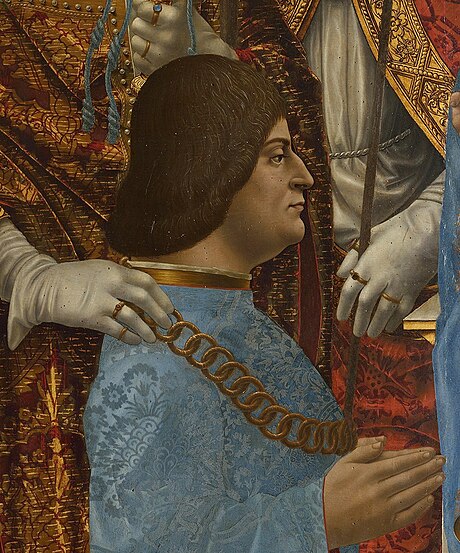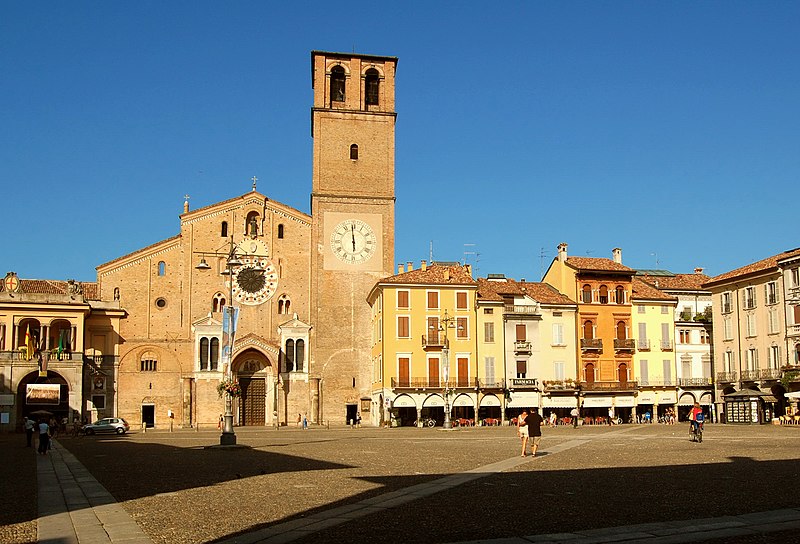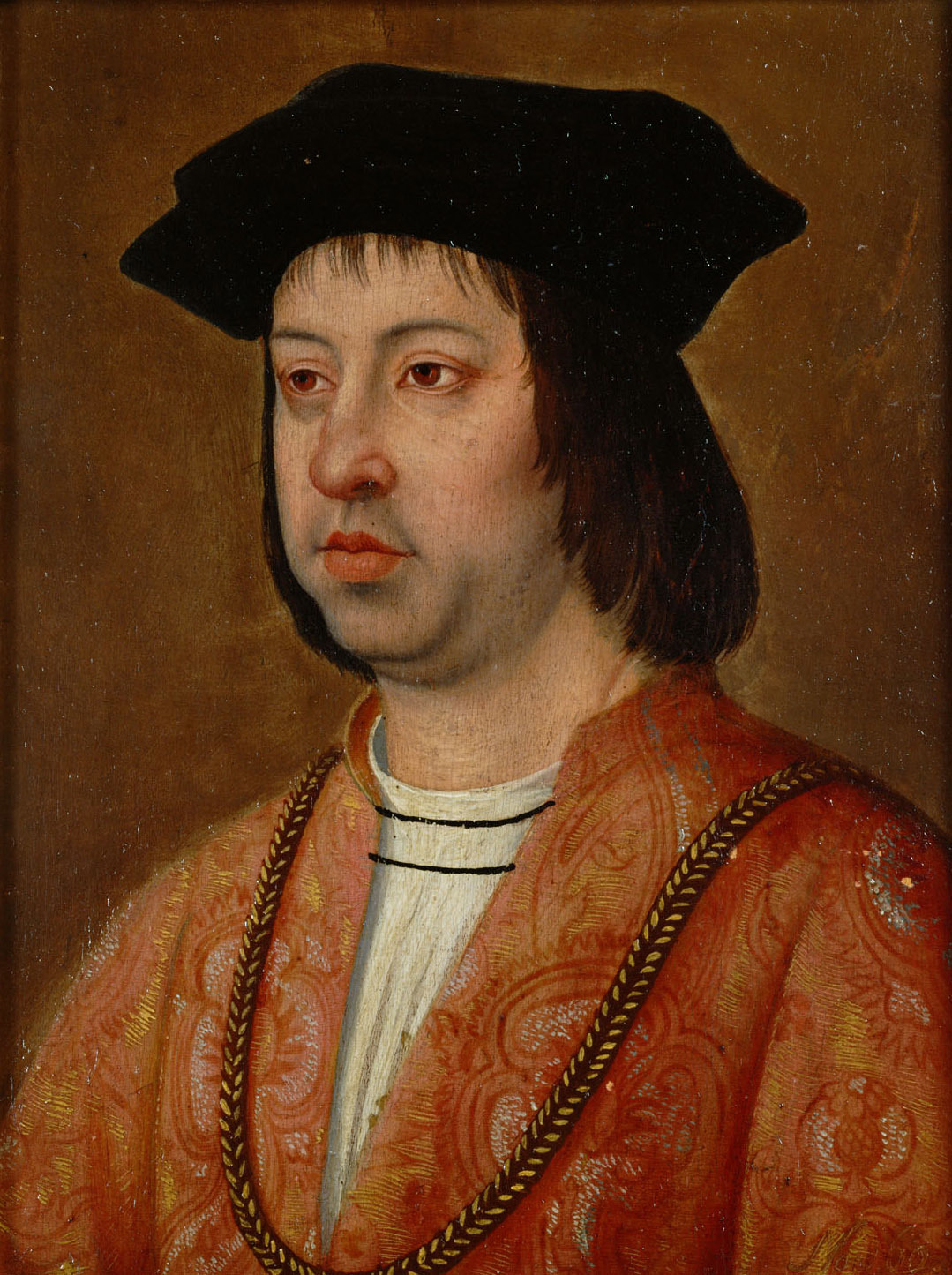 |
| Chateau des Ducs de Bretagne |
Queen of France Again
On 7th
January 1499 Anne and Louis were married in the Chateau des Ducs de Bretagne in Nantes. The newly-weds remained
in Brittany for most of the winter; Louis indulged in hunting which instantly
became fashionable amongst the nobility. In April they travelled to Blois,
where Anne entered the city in state for a second time. Louis departed for Lyon
in the summer to organise the forthcoming Italian campaign.
 |
| Romarantin |
As the
plague was resurgent in Blois, Anne moved to Romorantin to stay with Louise of Savoy, Duchess d’Angoulême and mother of the heir to the
throne. Louis and Anne’s eldest child Princess Claude[i] was born here on 13th October 1499. Louis
was close to Milan when he received the news of Claude’s birth;
‘There is good hope of
having a son, since one has a daughter.’[ii]
At the end
of November Louis travelled back to France to attend Claude’s baptism; the
royal family then returned to Blois. When Claude was eight months old she was
placed in the care of the Dame du Bouchage[iii].
A circle of learned men were attracted to Anne’s
service; among them the Italian humanist Publio Fausto
Andrelini from Forlì,
historian Jean Lemaire de Belges and poet Jean Marot. She also took into her service the most famous musicians of her time; Johannes Ockeghem, Antoine de Févin, Loyset Compère and Jean Mouton.
The
Paternal Inheritance
 |
| Ludovico Sforza |
Louis had his eye on Milan;
Louis’ claim to the dukedom came from his paternal grandmother, Valentina Visconti, the only daughter of Gian Galeazzo Visconti, Duke of Milan. Gian’s sons all died without issue
and the dukedom was claimed by Francesco Sforza. The current
duke Ludovico Sforza
had defeated Louis at Novara during the 1495 campaign and Louis was looking for
revenge.
With his sponsorship of
Cesare Louis had the support of Alexander VI; he also secured the neutrality of
Venice by
agreeing her annexation of Cremona. The
renewal of the Treaty of Étaples freed Louis of the possibility of an invasion
from England while the Swiss allowed Louis to recruit troops in the cantons. Philibert of Savoy allowed Louis freedom of passage through his lands upon promise of a
pension of 22,000 livres[iv] post conquest.
To fund his army in Italy
Louis cut back hard on his spending on pensions and the provincial estates
general were asked to provide subsidies. The Venetian ambassador reported;
‘To hold the estates consists of one thing;
the king opens up his revenues and expenses and asks for a subsidy.’[v]
One of the prime movers in
the effort to gain Milan for the French crown was Georges d’Amboise[vi], the Archbishop of Rouen. And among Louis’ troops rode Tristan de Salazar, the Archbishop of Sens, in full armour with lance in hand. Command of the French army was
given to Gian Giacomo Trivulzio, Stuart d’Aubigny and Louis de Ligny[vii].
A Second
Foray into Italy
 |
| Lodi |
The first French troops
arrived in the Milanese demesne in mid-July; Sforza offered to make Louis his heir, which Louis refused.
The French troops took Valenza and Alessandria; while Sforza was distracted by his French rival, the
Venetians marched on Lodi and several towns in Lombardy rebelled against their
Sforza overlord.
On 2nd September
1499 Ludovico Sforza fled to Maximilian’s court and Louis made his triumphal
entry into Milan. To win hearts and minds, Louis severely punished his troops
for any excess and the local nobility, persecuted under the Sforzas, had their
privileges restored. Louis left Milan in late 1499 and as soon as his back was
turned his men started to misbehave.
Ludovico Sforza returned at
the head of an army of Swiss mercenaries in January 1500. The Milanese threw
the French out of Milan, bar the troops garrisoning the castle. Louis sent a new army under Georges de la Trémoille, and the two sides met at the Battle of Novara on 8th April. Sforza’s troops refused to fight the Swiss on
the French side and Trémoille allowed them to leave the battlefield. Sforza
tried to conceal himself but was discovered and taken prisoner. He was
imprisoned at Loches and
died a few years later.
 |
| Ferdinand of Aragon |
This success turned Louis’
eyes to Naples, where many of his courtiers had lost lands and lordships they
hoped to recover. Louis now agreed a partnership with Ferdinand of Aragon, following the secret Treaty of Granada, signed on 11th November 1500[viii], Machiavelli
wrote that Louis was foolish to involve;
‘A very powerful foreigner…..who was capable
of driving him out.’[ix]
Louis sent a new army into
Italy under the command of Stuart d’Aubigny. Ferdinand sent his own army under Gonzalo da Cordoba and caught between the two allied armies King Federigo IV felt he had no
choice but to surrender. He spent his last years in the Chateau de Tours. The two allies fell out and the French invaded Spanish territory in
1502 which Gonzalo recovered the following year, defeating d’Aubigny and the Duke of Nemours.
.
Betrothal
 |
| Philip the Fair |
On 30th
April 1500, in a secret directive Louis signed a secret protocol directing that
Claude should marry his successor should Louis die without a son. In April 1501
Philip the Fair sent ambassadors, proposing that his son Charles marry the 18
month old Claude.
On 10 August
1501 the marriage contract between Claude and Maximilian’s heir Charles was
signed at Lyon by François de Busleyden Archbishop of Besançon, and William de Croÿ, Nicolas de Rutter and Pierre
Lesseman, the Burgundian ambassadors. As a part of the contract, Claude’s
inheritance of Brittany was promised to Charles.
‘The King and
Queen….promise….to procure that as soon as Madam Claude shall come to
marriageable age, she shall take as husband and spouse Monseigneur de
Luxembourg.’[x]
The
betrothal was not popular in Brittany.
Philip and
his Spanish wife Juana[xi] visited France at the end
of November and were received in the new Chateau de Blois. The couple were received with much
ceremony; Claude was meant to have taken part but was overcome with noisy tears
and had to be removed.
The first Treaty
of Blois, signed in
1504, gave Claude a considerable dowry in the likely event of Louis XII's death
without male heirs: besides Brittany, Claude was also to receive the Duchies of
Milan and Burgundy, the Counties of Blois and Asti and the territory of the Republic of Genoa, then occupied by France.
Downfall of a Soldier
 |
| Louise of Savoy |
In late 1503
Louis fell ill and the doctors feared for his life. In the new year the
Maréchal de Gié, governor of the young heir François, contacted Alain d’Albret
telling him to get 10,000 men ready to defend the kingdom in the event of the
king’s death. Anne was antagonistic towards Gié as he was one of the commanders
of the French army that had overrun Brittany. Louise of Savoy detested him too,
as he tried to reduce her influence over her son.
In July 1504
an investigation began into the accusations against Gié; the charges ranged
from the banal, that he had told Louise of Savoy that Anne hated her, to the
charge that he was intending to ensure that he would control François and head
the regency council in the event of Louis’ death. D’Amboise, eager to remove a
rival for power, had the prosecutor Pierre Bonnin draw up charges. According to
Bonnin Gié;
‘Wept and lamented when he
read it, saying that he was lost and confessing that it was true.’[xii]
 |
| Altar-piece showing Louis XII to left and Anne to right |
In October Gié
met with members of the Grand Conseil and hearing his case and denied any wrong doing. In December
the Grand Conseil refused to convict Gié and adjourned the case for three
months during which Gié was to remain at liberty. Anne was most displeased and
prevailed upon Louis to transfer the case to the Parlement of Toulouse. Anne went to Brittany and had the
records searched for any evidence of Gié’s crimes.
The Toulouse
Parlement heard the case throughout 1505 and delivered judgment on 9th
February 1506. They dismissed most of the charges but Gié was found guilty of a
number of misdemeanours, mostly in relation to the misuse of royal troops. He
was suspended from his job as Maréchal for five years and barred from court for
that period as well as being removed as François’ guardian. Gié spent the
remainder of his life on his estates.
Bibliography
Louis XII –
Frederic J Baumgartner, MacMillan Press Ltd 1996
Renaissance
Europe – JR Hale, Wm Collins Sons and Co Ltd 1971
The Rise and
Fall of Renaissance France – RJ Knecht, Fontana Press 1996
Absolute
Monarchs – John Julius Norwich, Random House 2011
A History of
France 1460-1560 – David Potter, MacMillan Press Ltd 1995
Anne of
Brittany – Helen Josephine Sanborn, General Books 2012
The March of
Folly – Barbara W Tuchman, Sphere Books Ltd 1984
Twice
Crowned Queen – Constance de la Warr, Eveliegh Nash 1906 (Reprint 2015)
www.wikipedia.en
[ii]
A Twice Crowned Queen – de la Warr
[iv]
In 2013
the relative: historic standard of living
value of that income or wealth is £15,100,000.00 economic status value of that income or wealth is £426,300,000.00 economic power value of that income or wealth is £6,008,000,000.00 www.measuringworth.com
[v]
Louis XII - Baumgartner
[vi]
Recently made a cardinal at the behest of Louis
[vii]
Without a direct heir, Louis was unable to leave France
[viii]
Louis has been criticised for signing this treaty whose long-term effects was
to increase Spanish influence in Europe
[ix]
Louis XII - Baumgartner
[x]
A Twice Crowned Queen – de la Warr
[xi]
Daughter of Ferdinand and Isabella
[xii]
Louis XII - Baumgartner
No comments:
Post a Comment
Note: only a member of this blog may post a comment.